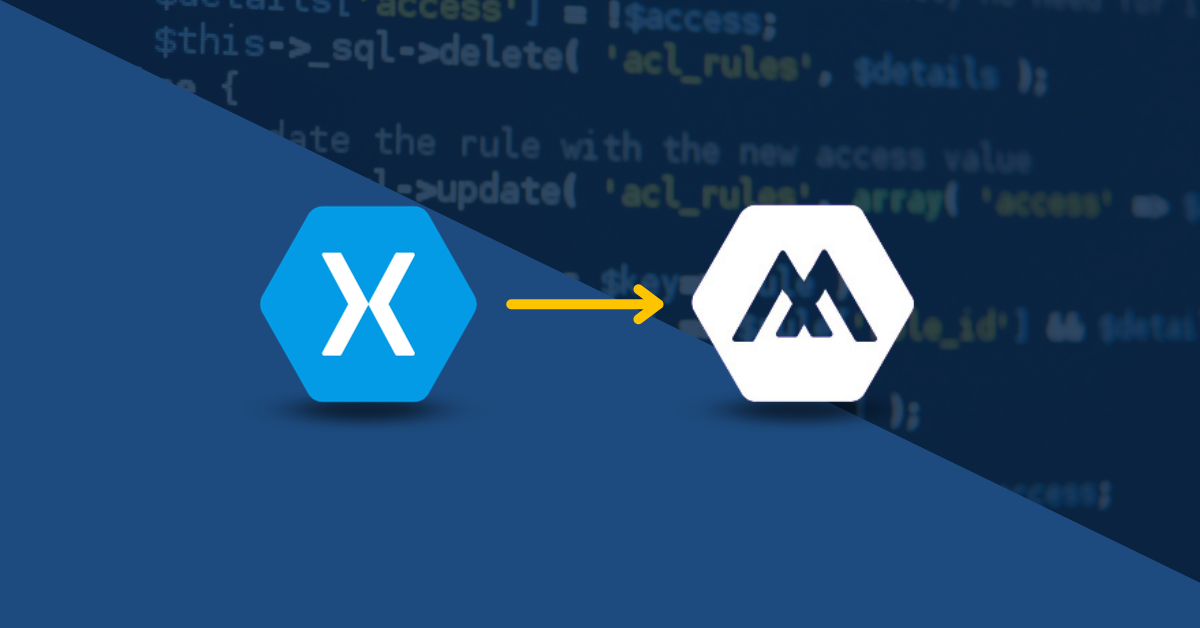
Built by Microsoft, .NET MAUI (Multi-platform App UI) is a unified framework for building cross-platform applications for Windows, Android, macOS, and iOS. Developers use it to write code once and deploy it across multiple platforms, eliminating the need to duplicate their work in separate native development. .NET MAUI serves as the Xamarin.Forms evolution, inheriting its fundamental capabilities while introducing new features and optimizations. This guide will provide a .NET MAUI overview, including its features, benefits, and use cases.
.NET MAUI offers a comprehensive suite of features designed to simplify cross-platform development, enhance performance, and provide flexibility.
One of the most significant changes .NET MAUI brings is a single project structure to target multiple platforms. Unlike Xamarin.Forms, where you had to maintain separate projects for Android, iOS, and other platforms, .NET MAUI condenses this into a single project, simplifying project management and reducing the complexity associated with syncing changes across different projects.
.NET MAUI provides enhanced development flexibility through its wide array of controls and layouts. It includes all the essential controls from Xamarin.Forms while introducing new ones that were previously unavailable or required third-party libraries. .NET MAUI controls like GraphicsView and Shapes allow for advanced graphics rendering, expanding the scope of what developers can achieve. Additionally, .NET MAUI comes with improved customization options, enabling you to create tailored user interfaces with ease.
With near-native performance achieved by optimizing the underlying architecture and rendering engine, .NET MAUI delivers faster start-up times, smoother animations, and a more responsive application UI design. It also provides greater access to native APIs, which means you can more easily integrate platform-specific functionality without resorting to cumbersome workarounds. You can now directly tap into native features, such as Bluetooth, camera, or GPS, right from your .NET MAUI code.
Previously, Blazor was primarily used for building web applications using WebAssembly. Its integration with .NET MAUI allows developers to build hybrid applications that share code and libraries between web and native mobile applications. Blazor integration reduces development time and ensures consistency in behavior and appearance across different platforms. With Blazor, you can write your application logic in C#, eliminating the need to use JavaScript for client-side logic in web portions of your app.
Cross-platform development has gained traction in the software industry due to the proliferation of devices and operating systems. Businesses need to reach users where they are, often spanning multiple platforms like Android, iOS, Windows, and the web. Developing separate applications for each platform requires considerable time, resources, and specialized skills. .NET MAUI’s emphasis on cross-platform development allows developers to write code once and deploy it on multiple platforms, accelerating time-to-market and reducing development costs.
.NET MAUI comes with a rich set of controls and layouts out-of-the-box, which saves developers from relying on third-party libraries or writing custom controls for basic functionalities. This reduced complexity and overhead allows developers to focus on building features and improving user experience rather than wrestling with project configurations and platform-specific limitations.
Its integration with .NET puts advanced language features and a comprehensive standard library at the tip of your fingers so you can build more performant and scalable applications. Being part of a unified ecosystem means that .NET MAUI can easily integrate with other .NET libraries and services, like ASP.NET for web services or Entity Framework for database operations.
As an evolution of Xamarin.Forms, .NET MAUI offers significant improvements and additional features. Instead of requiring multiple projects for different platforms, making management complex., .NET MAUI has a single project structure to target all platforms.
Xamarin.Forms had some performance limitations, particularly in rendering complex UI elements. .NET MAUI focuses on native-level performance, improving both rendering speed and application responsiveness.
.NET MAUI also adds new controls and increases customization options for existing ones while streamlining access to native functionalities.
The biggest improvement may be native support for Blazor. Xamarin.Forms lacked native integration, which limited its utility for web-based applications. With Blazor, .NET MAUI enables code sharing between web and mobile platforms.
.NET MAUI also stacks up favorably in comparison to other cross-platform tools, including:
Due to its versatility, .NET MAUI is an ideal choice for a wide range of use cases across industries.
Enterprises often require mobile applications that are consistent across multiple platforms for better manageability and user experience. .NET MAUI shines in this scenario by enabling the development of cross-platform apps with a single codebase.
E-commerce businesses want to provide a seamless shopping experience across web and mobile platforms. .NET MAUI, with its native-like performance and rich UI controls, can be used to develop sophisticated and user-friendly e-commerce applications. The integration of Blazor enables code and feature sharing between web and mobile platforms, giving users a consistent experience.
.NET MAUI offers strong native API support, allowing developers to easily integrate with device capabilities like Bluetooth, sensors, and cameras. This makes it a strong candidate for building Internet of Things (IoT) applications where cross-platform consistency and native device features are crucial.
While .NET MAUI offers developers more versatility and control, application security is still a primary concern. PreEmptive Dotfuscator is the developer’s choice for advanced obfuscation to protect .NET applications, including those built with .NET MAUI, from reverse engineering and the data breaches it leads to.
When developers use .NET MAUI to build their applications, they can integrate PreEmptive’s obfuscation to ensure that source code is hardened against hackers’ attempts to gain unauthorized access. Curious to learn more? Request a free trial and see it in action for yourself.